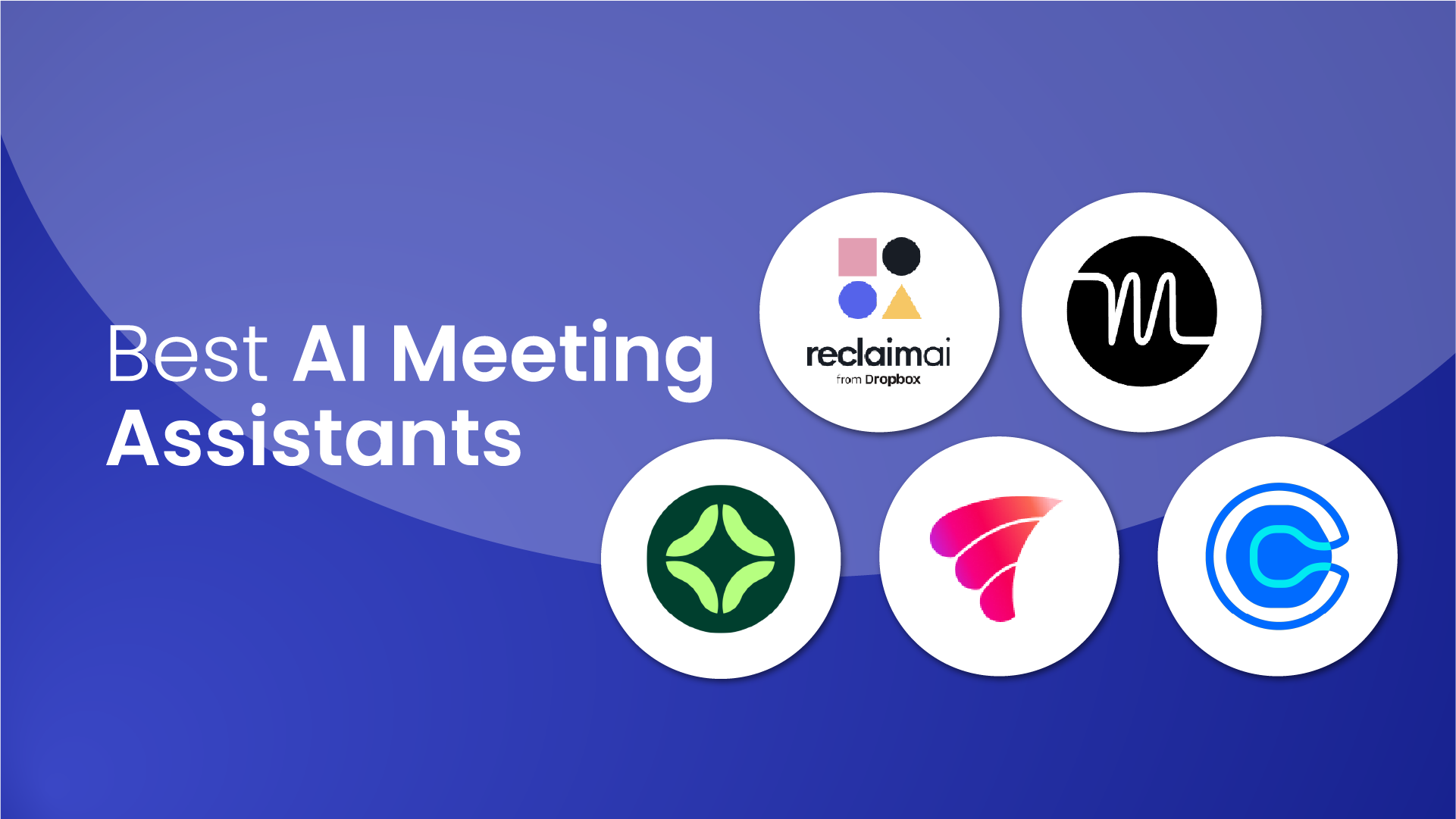A recent study by Salesforce found that 86% of employees and executives cite a lack of collaboration or ineffective communication for workplace failures. But what if the problem isn't just our communication tools, but our fundamental understanding of how teams work?
In today's complex work environment, the ability to collaborate effectively isn't just a nice-to-have skill – it's necessary for success. What if the very characteristics that make teams diverse and innovative – their size, virtual nature, and specialized expertise – are also potentially hindering their ability to work well together?
Whether you're a collaborative team leader, a team member, or simply interested in optimizing your work relationships, this guide will equip you with the knowledge and tools to foster collaboration and unlock your team's full potential.
Top 10 tips to improve team collaboration
- Engage in active listening
- Share knowledge & resources
- Strive for adaptability & compromise
- Celebrate successes together
- Cultivate a "Yes, And" culture
- Grow collective intelligence
- Embrace "constructive dissent"
- Practice "radical transparency"
- Develop a "shared language"
- Choose the right collaboration tools
What is team collaboration?
Team collaboration is the process of individuals working together, pooling their diverse skills and knowledge, to achieve a shared goal or complete a task more effectively than they could alone.
Team collaboration isn't just people working in the same space or on the same project. It's a dynamic process where those with diverse skills and perspectives come together, actively sharing knowledge, resources, and responsibilities to achieve a common goal.
Effective team collaboration involves:
- Open communication: Team members freely express ideas, concerns, and feedback.
- Mutual respect: Each individual's contributions are valued and appreciated.
- Shared decision-making: Decisions are made collectively, taking into account everyone's input.
- Flexibility & adaptability: Team members are willing to adjust their roles and responsibilities as needed.
- Focus on shared goals: Individual agendas are aligned with the overall objectives of the team.
Done right, team collaboration has the power to transform workplaces, driving higher performance, sparking creativity, and building a more engaged workforce. It's where the magic of (excuse the buzzword) synergy happens, making the collective result far greater than anything achievable alone. But unlocking this collaborative goldmine isn't always easy, especially with the complexities of today's increasingly diverse teams.
The paradox of modern teams
Companies are hiring collaborative teams to take on intricate problems and fuel groundbreaking ideas. Yet, these modern teams are anything but ordinary. Often large and spread across the globe – they’re made up of individuals with vastly different experiences and highly specialized skills.
As the Harvard Business Review (HBR) points out, these very attributes are often the keys to thriving in today's interconnected global landscape. Large teams possess a wealth of collective intelligence, virtual teams effortlessly erase geographic barriers, diverse teams bring a cornucopia of fresh perspectives, and specialized teams are the deep divers of specific knowledge domains.
But here's the twist: these very strengths can also be their Achilles' heel. HBR's research reveals a fascinating paradox – larger teams can become tangled in miscommunication and a lack of accountability, while remote teams may struggle to promote trust and keep everyone engaged. Diverse teams, while rich in perspective, can stumble over cultural nuances and varying communication styles. As a result, specialized teams risk falling into the trap of siloed thinking and knowledge hoarding.
Understanding these pitfalls is the first step towards building a team that can harness its unique power and conquer the challenges.
What does good team collaboration look like?
In a high-performing team, collaboration isn't just a buzzword; it's a lived reality. Here's what good team collaboration looks like in action:
- Open & honest communication: Team members feel comfortable sharing ideas, opinions, and concerns without fear of judgment or retribution. They actively listen to each other, ask clarifying questions, and seek to understand different perspectives.
- Shared ownership & accountability: Everyone on the team feels responsible for the success of the project. They take initiative, offer support to their colleagues, and hold each other accountable for meeting commitments.
- Mutual respect & trust: Team members value each other's contributions and trust each other's intentions. They celebrate successes together and learn from setbacks without assigning blame.
- Healthy conflict resolution: Disagreements are seen as opportunities for growth and innovation. Team members engage in constructive dissent, respectfully challenging ideas and seeking solutions that benefit the entire team.
- Flexibility & adaptability: The team is willing to pivot and adjust their approach as needed. They embrace change and see it as a chance to learn and improve.
- Collective decision-making: Decisions are made collaboratively, taking into account the expertise and perspectives of all team members.
- Positive & supportive environment: Team members feel valued, appreciated, and supported. They celebrate each other's successes and create a sense of camaraderie and shared purpose.
10 practical tips to improve team collaboration
While leadership and company culture set the stage, successful collaboration ultimately depends on the daily interactions and habits of team members. Here's how to cultivate a collaborative spirit in your team's everyday work:
1. Engage in active listening
Active listening is the bedrock of effective communication and successful team collaboration. It's not just about hearing the words, but truly grasping and valuing the viewpoints of others. When team members feel genuinely heard, trust flourishes and connections deepen.
To master active listening, begin by giving the speaker your undivided focus. Eliminate distractions, lock eyes, and tune into both their words and nonverbal cues. Resist the urge to mentally prepare your response while they're talking; instead, aim for a deep understanding of their message.
Don't hesitate to ask clarifying questions to confirm you grasp their viewpoint. Instead of shutting down an idea with a "That won't work," try a curious approach like, "Can you walk me through how that solution would tackle our current challenge?"
Seeking to understand doesn't mean you must agree with everything your colleagues say. However, by taking the time to listen and appreciate their perspective, you create a more open and respectful dialogue where everyone feels valued and heard.
2. Share knowledge & resources
In a collaborative team, knowledge isn't a hidden treasure; it's a common currency that benefits everyone. Hoarding information or resources not only blocks innovation but also chips away at trust. Instead, cultivate a culture of generosity.
Be the initiator. Freely share your expertise, insights, and resources with your teammates. Offer to mentor a less seasoned colleague, pass along interesting articles or research, or even create a shared knowledge hub accessible to everyone. When you hit a snag, don't be afraid to ask for help—it's a sign of strength, not weakness, and encourages a give-and-take atmosphere.
By openly sharing your knowledge and resources, you set in motion a powerful cycle of learning and growth. Your willingness to lend a hand not only strengthens the skills and knowledge of others but also promotes an atmosphere of trust and mutual respect within the team. Remember, when everyone chips in with their unique insights and experience, the entire team reaps the rewards.
3. Strive for adaptability & compromise
Collaboration isn't a straight shot to the finish line. It's more like navigating a winding mountain road, where unexpected twists and turns are par for the course. The ability to nimbly adjust your plans and ideas as new information comes to light or circumstances take a turn is necessary to keep the momentum going and ultimately reach those shared summits.
Rigidity is the kryptonite of collaboration. When individuals stubbornly cling to their ideas or refuse to entertain alternative viewpoints, it's a recipe for stagnation and frustration. The antidote? Embrace a growth mindset that welcomes change with open arms and view it as a catalyst for progress.
Compromise is another pillar of thriving teamwork. It's rare for every single team member to agree on every single decision or approach. The secret sauce is to be open to solutions that benefit the majority, even if it means sacrificing a few of your personal preferences. This doesn't mean throwing your core values out the window or compromising on quality. It's about being open-minded, willing to bend, and exploring different avenues to reach a win-win solution.
4. Celebrate successes together
Taking a moment to acknowledge and celebrate wins, no matter how big or small, is a simple yet incredibly powerful way to elevate team spirit and solidify that collaborative bond. Recognizing individual achievements shines a spotlight on the unique value each person brings to the table while celebrating milestones as a team ignites a sense of shared purpose and camaraderie that fuels further collaboration.
Here are some creative ways to celebrate wins together and amplify that collaborative energy:
- Public shout-outs: Amplify individual contributions by publicly acknowledging achievements during team gatherings or company-wide announcements. Highlight the specific actions and behaviors that paved the path to success.
- Team rewards: Celebrate team milestones with shared perks, like a group lunch at that trendy new spot, a fun outing so team members bond, or even a small bonus to show your appreciation.
- Personal notes of appreciation: A handwritten note or a thoughtful email expressing gratitude for someone's contribution is a simple yet powerful way to boost morale and reinforce positive behaviors.
- Create a "Wall of Fame": Dedicate a space in your physical or virtual workspace to showcase team achievements and individual contributions. It's a visual reminder of the team's collective accomplishments and a source of inspiration for future endeavors.
5. Cultivate a "Yes, And" culture
To unleash your team's full creative potential and generate a whirlwind of innovative ideas, consider adopting the "Yes, And" principle. This concept, straight from the playbook of improvisational comedy, nurtures a collaborative mindset where team members build upon each other's ideas, rather than reflexively shooting them down.
In the world of improv, "Yes, And" is a golden rule. When one performer throws out an idea, no matter how outlandish, the others roll with it ("Yes") and then build on it ("And"). This sets off a chain reaction of unbridled creativity, where ideas snowball and evolve in unexpected and delightful ways.
In the workplace, adopting a "Yes, And" mindset can revolutionize the way teams tackle challenges and brainstorm solutions. Instead of knee-jerk reactions like "That won't work" or "We've tried that before," team members are empowered to say, "Yes, and what if we also tried this?" or "Yes, and how can we take that concept to the next level?"
6. Grow collective intelligence
The combined brainpower and experience of a team far outstrip that of any lone wolf. To tap into this hidden reservoir of brilliance, cultivating collective intelligence is huge.
And collaborative decision-making is the magic wand that unlocks the collective wisdom of your team. Instead of relying on a single leader or expert to call all the shots, involve the whole crew in the process. This not only leads to smarter, more well-rounded solutions but also fosters a sense of ownership and engagement that makes everyone feel like they're truly part of something bigger.
Here are some collaborative decision-making techniques to consider:
- Brainstorming: Encourage team members to freely share ideas, no matter how wild or impractical they may seem. The goal is to generate as many ideas as possible without judgment or criticism.
- Dot voting: After brainstorming, allow team members to vote on their favorite ideas using dot stickers or a similar system. This helps to narrow down the options and identify the most popular ideas.
- Consensus building: Strive to reach a decision that everyone on the team can support, even if it's not their first choice. This involves open discussion, compromise, and a willingness to find common ground.
7. Embrace "constructive dissent"
Healthy disagreement is the secret ingredient that fuels innovation. When team members feel safe enough to voice opposing views and challenge the status quo, it sparks a dynamic exchange that can lead to stronger, more well-rounded solutions and a deeper grasp of complex issues.
To nurture a collaborative team environment in which constructive disagreement can thrive:
- Create a safe haven: Foster a collaborative environment where everyone feels empowered to speak their mind, regardless of their title or experience. Encourage open dialogue and make active listening the norm.
- Focus on ideas, not egos: Encourage respectful debate that centers on the merits of different approaches, not personal attacks or critiques. Remember, it's about the ideas, not the people behind them.
- Welcome a range of perspectives: Recognize that different backgrounds and experiences are a treasure trove of valuable insights. Encourage other team members to share their unique viewpoints and challenge the status quo.
- Reframe dissent as a learning adventure: Instead of seeing disagreements as threats or roadblocks, embrace them as opportunities for growth and discovery. Encourage curiosity and a willingness to explore uncharted territory.
- Lead by example: As team leaders, model the art of respectful disagreement. Actively listen to opposing viewpoints, acknowledge valid points, and offer alternative perspectives with tact and respect.
8. Practice "radical transparency"
Drawing inspiration from Kim Scott's concept of "radical candor," radical transparency emerges as a potent elixir for encouraging trust and collaboration within teams. It's about communication that's open and honest, even when the truth is a bitter pill to swallow. This means sharing information without reservation, offering feedback that's both direct and constructive, and tackling issues head-on, without resorting to whispers or tiptoeing.
But radical transparency isn't about wielding honesty as a blunt instrument or disregarding feelings. It's about striking a delicate balance between truthfulness and empathy. When offering feedback, zero in on the behavior or action, not the person's character. Be specific, back it up with real-world examples, and always offer actionable suggestions for improvement.
Here's how to infuse radical transparency into your team's DNA:
- Share freely: Knowledge is power, but in this case, sharing is caring. Don't hoard information or knowledge. Be upfront about your goals, the obstacles you face, and the progress you're making. Encourage open dialogue and create a space where everyone feels safe to share their thoughts and opinions, without fear of judgment.
- Give feedback like a pro: Make feedback a regular part of your team's rhythm, both the good and the not-so-good. Zero in on specific behaviors and actions, and offer concrete suggestions for improvement. Avoid personal attacks or sweeping generalizations.
- Tackle issues head-on: Don't let problems simmer beneath the surface. Address issues directly and respectfully as soon as they crop up. This nips misunderstandings in the bud and fosters a foundation of trust within the team.
- Cultivate a feedback culture: Encourage employees to both give and receive feedback openly and honestly. Create a safe haven where feedback is viewed as a valuable tool for growth and development, not a personal attack.
9. Develop a "shared language"
When teams are a vibrant tapestry of individuals hailing from diverse backgrounds and wielding varied expertise, it's not uncommon for communication to get a little lost in translation. Misunderstandings can sprout from differences in terminology, the use of specialized jargon, or even varying interpretations of key concepts. To bridge this communication gap, cultivate a shared language within the team.
Creating a shared vocabulary for the most frequently used terms and concepts in your team's work can be a game-changer when it comes to clarity and minimizing misinterpretations. Begin by pinpointing those essential words and phrases that pop up most often, and then come together to agree on a common definition for each. This might involve crafting a handy glossary or reference document that everyone on the team can easily access. Think of it as your team's very own secret decoder ring for seamless communication.
10. Choose the right collaboration tools
The digital age has ushered in a wide array of collaborative tools that can significantly enhance teamwork. Project management platforms like Asana or ClickUp help teams visualize workflows, track progress, and meet deadlines. Communication tools like Slack or Microsoft Teams facilitate real-time connection, enabling quick discussions and brainstorming sessions. Document-sharing platforms like Google Drive or Dropbox enable seamless collaboration on files, so everyone has access to the latest versions.
And, time management tools like Reclaim.ai can help teams optimize their meeting schedules, protect focus time, and guarantee important tasks don't slip through the cracks. The key is to select tools that align with your team's specific needs and workflow. Experiment with different options to find the combination that best supports your team's communication, collaboration, and productivity.
A successful team is a collaborative team 🤝
Effective collaboration is not a one-size-fits-all endeavor, but an ongoing effort. It requires clear communication, mutual trust, efficient processes, and tools. By embracing these strategies and nurturing a culture of collaboration, teams can unlock their full potential – achieving greater innovation, productivity, and business success.



































